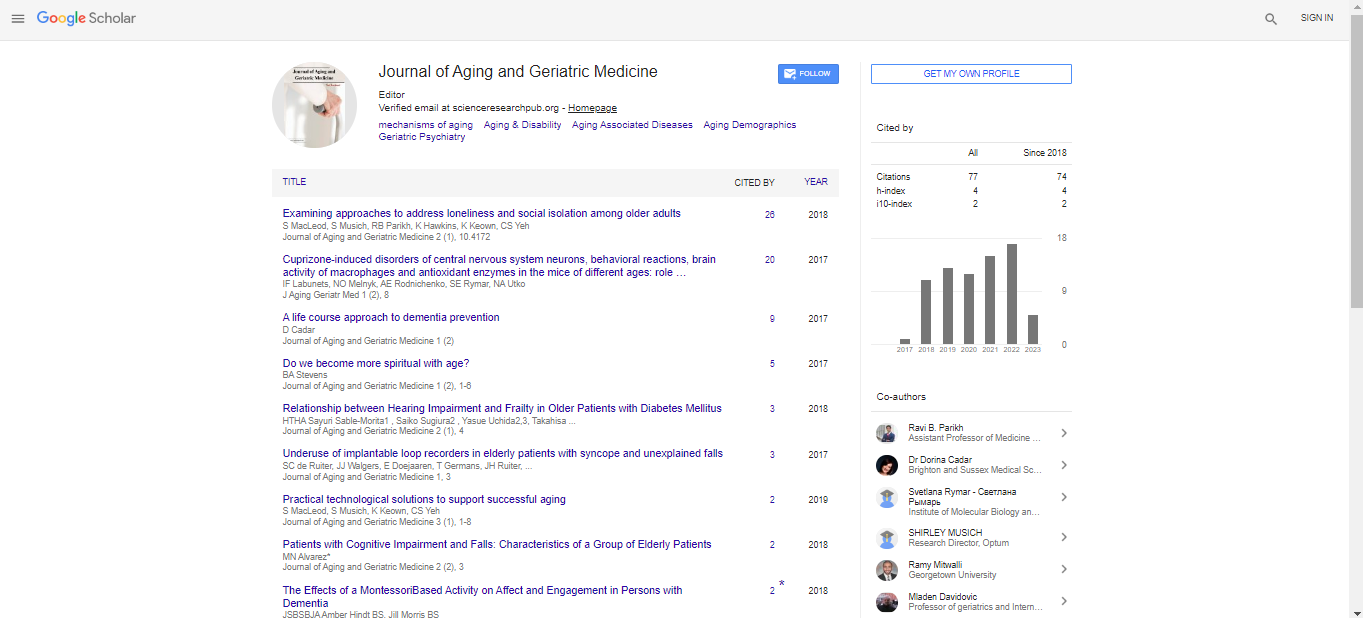Preparing for a better end: practical steps in managing advanced illness and end-of-life care
Dan Morhaim
State Legislator, Johns Hopkins Bloomberg School of Public Health, Maryland, United States
: J Aging Geriatr Med
Abstract
IS END-OF-LIFE CARE A MATTER of personal values, economics, public policy, or a looming public health crisis? Actually, it is all of these. While we strive to control nearly every aspect of our lives, many of us abandon control of life’s final passage. But the reality is that we can have a say in how, when, and where we die. We can choose best that modern medicine has to offer but also determine when enough is enough. Ask yourself this: where would you like to be when the end comes? Who is around you? What’s going on? Almost everyone says at home, pain free, with family and friends around. Nobody wants to die in an ICU, long past any hope of recovery, ties to tubes and monitors, without our loved ones present. Advance Directives (ADs) are free, readily available, legal forms that empower patients to direct their medical care should they be unable to speak for themselves. The COVID pandemic has made the need more compelling because patients may not be able to communicate their wishes due to the nature of the disease and because family members are not currently allowed at the bedside for safety reasons. While it’s clear that 100% of us will die eventually, end-of-life care is a topic most of us avoid thinking about or talking about. As a result, the rate of completion of ADs in the US is about 40% overall, while the rate in communities of color at about ½ that. When those without an AD were asked if they wanted one, they overwhelmingly said “Yes”. When asked where they would prefer to receive information about an AD if they were to create one in the future, the most common response was from a physician. Clearly, the need for education and communication about AD is essential. Completing an AD form ought to be a normal, routine, and responsible part of adulthood. Only an individual can complete their own AD. Then these must be made available to clinicians, and clinicians must learn to honor them. The benefits of ADs are manifold and shift the likelihood that you will get the kind of care you want consistent with your life circumstances. Care is personalized. Values are respected. Intra-family conflicts are minimized or avoided. Clinicians know what kind of care patients want. This disparity will decrease. Hospice and palliative care become utilized. Then the end-of-life experience becomes more holistic, manageable, and compassionate. The above speak to humanistic aspects. But any discussion about healthcare must include costs as a topic. With completion of ADs, health care expenditures are reduced dramatically, as fewer people die in hospitals and ICU’s and more die with hospice care and at home. Instead of cost-control being done by slashing benefits or raising costs to employers, patients, and taxpayers it’s done the right way by having patients exert their rights to end-of-life care decision making. Conclusion: advance care planning and the completion of advance directives should be a public health priority and included in routine medical care.
Biography
Dan Morhaim, M.D. brings a unique perspective: Physician, state legislator, academic, author, consultant. As an emergency medicine physician, he's been on the front lines of health care for over 40 years, working in settings ranging from an urban trauma center to a homeless clinic. As a state legislator, he served in the Maryland House of Delegates for 24 years (1995-2019). While faculty at the Johns Hopkins Bloomberg School of Public Health (16 years) he taught public policy, and his research on advance care planning led to numerous articles and two books: the first book in 2011 and his second in 2020 (“Preparing for A Better End, www. thebetterend.com) both from Johns Hopkins Press. Dr. Morhaim provides clinical consultation to a variety of entities and volunteers on boards and commissions.
 Spanish
Spanish  Chinese
Chinese  Russian
Russian  German
German  French
French  Japanese
Japanese  Portuguese
Portuguese  Hindi
Hindi 